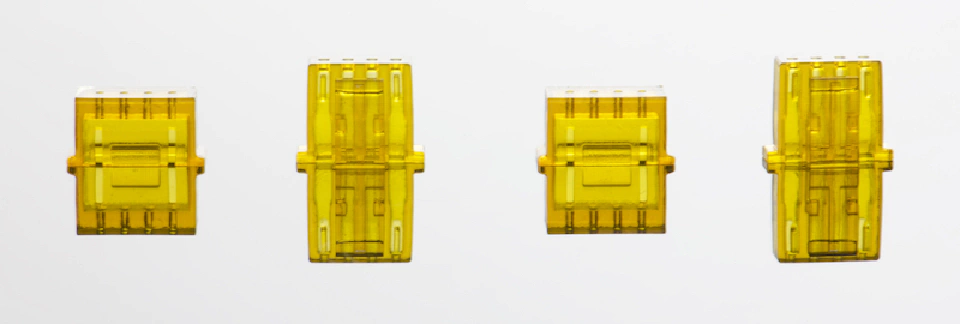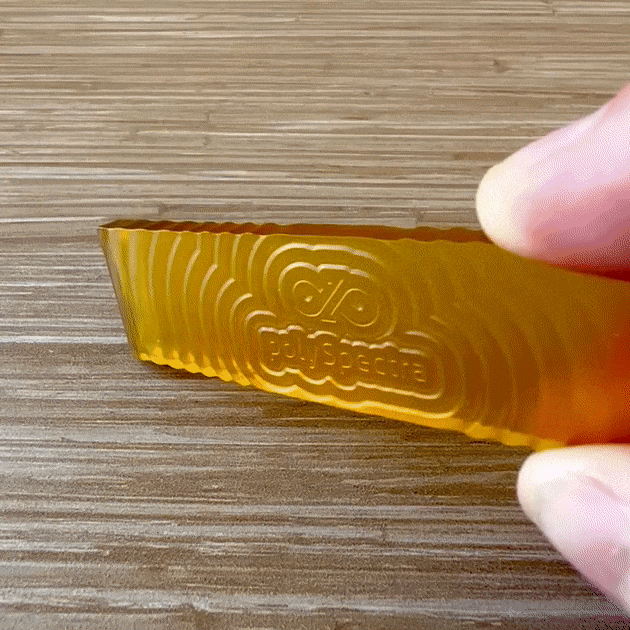COR Alpha Application Highlight: Electrical Connectors
Electrical connectors are everywhere. Every car and every plane, every computer and every gadget. As the world moves towards increasing electrification and connectivity, with smart devices and the internet of things, the demand for connectors is rising. Worldwide, the electrical connectors market is estimated to be a $70B/yr market.
Additive manufacturing offers a number of advantages to the design flexibility, lead time, and associated inventory overhead of fabricating electrical connectors. However, 3D-printing production-grade connectors is not as easy as it seems. First, the connectors need to be printed with very high accuracy and surface finish. This is required to achieve a reliable and repeatable snap fit, as well as to assemble devices with printed and non-printed components. Within additive manufacturing, stereolithography is the best choice for its ability to fabricate parts with the dimensional accuracy and surface finish required to rival traditional manufacturing methods such as injection molding. The biggest hurdle to adoption of 3D-printing for connector manufacturing is that traditional photopolymers do not have the materials properties to perform as functional electrical connectors.
At polySpectra, we have spent years diving into the specific requirements to directly print production-grade electrical connector components. In this Application Highlight, we want to focus on a few of the polymer material properties that are relevant to printing functional electrical connectors:
Durable and weatherable
In order for a connector to snap fit, the material it is made out of needs to have a combination of stiffness, flexibility and durability. This is hard to come by in 3D printing. Even materials that possess the combination of stiffness and flexibility required to achieve a snap fit rarely have the durabilty required to repeatedly snap and release. In other words - just because your printed connector works right out of the printer doesn’t mean that it is safe to deploy in the field. A production-grade connector needs to be able to snap and release many thousands of times over the lifespan of the product.
Water-proof and chemically-resistant:
Connectors in the real world need to be waterproof and corrosion proof. Obviously you can’t have your car shorting out in the rain, or after an accidental motor oil spill. Cyclic Olefin Resin is one of the most chemically-resistant additive polymers on the market. We have been paid to subject our parts to everything from common hand soap to jet fuel to hot coffee. polySpectra has repeatedly proven to our industrial customers that their printed products will withstand any accident.
Heat-resistant:
Many electrical connectors need to be deployed in harsh environments, from under the hood to orbiting the earth. There are very few additive polymers on the market that can simultaneously achieve the working temperature and ductility required to displace engineering-grade thermoplastics and thermosets. We have spent years and millions of dollars characterizing the performance of COR Alpha under extreme thermal conditions, including working temperatures from -60 to 150 °C, depending on the use case.
Dielectric properties:
Printed dielectric enclosures need to exhibit low permittivity and low dissipation factors and high breakdown strengths to minimize interactions with the electromagnetic fields and currents of the connector circuit. A low dissipation factor is important to the thermal stability of the device and keeps the polymer components from heating up under high current conditions.
Summary:
The direct additive manufacturing of any production-grade product requires a careful connection between the digital, physical and chemical approaches. Our team of additive manufacturing specialists can assist you in designing your product for additive manufacturing. Click here for a full list of COR Alpha materials properties.
If you have a connector that you’d like us to print for you, please upload here. If you would like to discuss applying our production-grade photopolymers to your industrial additive manufacturing challenges, please reach out to partners [at] polyspectra (dotcom).












